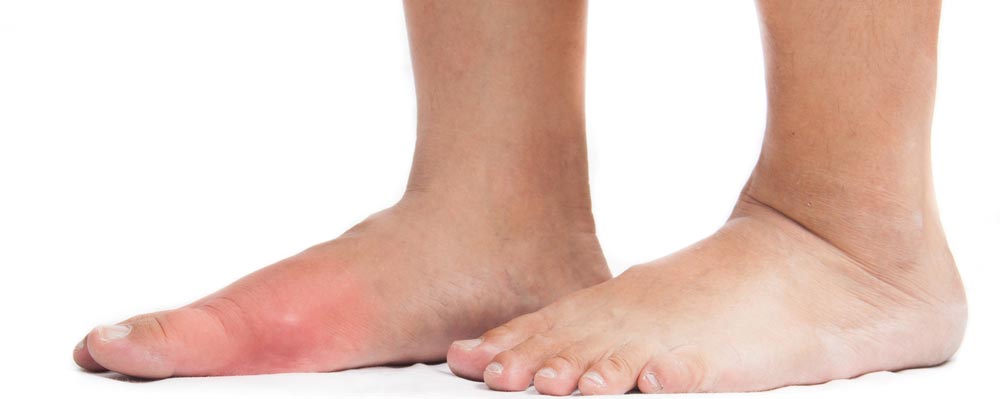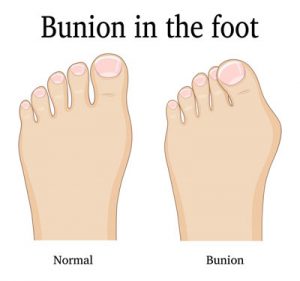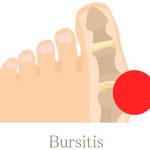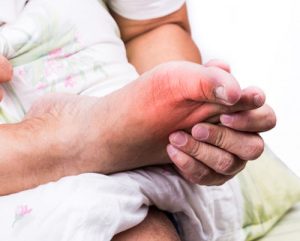 Your big toe is more than just a device to locate bedposts and chair legs in the dark.
Your big toe is more than just a device to locate bedposts and chair legs in the dark.
The big toe is the only toe significant enough to get its own medical name. It’s dignified with the appellation “hallux”. The other four little piggies have to be satisfied with mere numbers.
Whenever you are upright, there are crucial moments when your big toe bears half your body weight. Your big toe is also an important element in maintaining your balance.
Traumatic injuries or other painful conditions of the big toe can have a destabilizing impact on your daily life.
What is the phalanx and MTP joint?
The joint where your big toe joins your foot is known as the metatarsophalangeal (MTP) joint. The MTP joint connects the first long bone in your foot (the metatarsal) to the first bone in your big toe (the phalanx).
A lump, big toe bump, pain, or swelling in your MTP joint can be a symptom of several different conditions that can lead to debilitating problems.
Five conditions that can cause bumps on the big toe (besides furniture)
1. Hallux limitus, also known as big toe arthritis
Hallux limitis is the medical term for the initial stages of arthritis in the MTP joint. The early symptoms of MTP arthritis are limited flexibility in the affected joint, together with swelling, pain, and redness. As arthritis worsens, it causes progressive disintegration of the cartilage which ordinarily buffers the joint.
As the MTP joint becomes increasingly stiff, hallux rigidus becomes the appropriate diagnosis. At this stage, arthritic bone spurs can cause a sort of Rice Krispy (snap, crackle, and pop) effect.
What is the treatment for big toe arthritis?
It’s crucially important to deal with big toe arthritis promptly because surgical replacement of the degraded cartilage is not yet possible. The first line of treatment for big toe arthritis is usually custom orthotic insoles, which relieve pressure on the big toe. A cleanup surgery, known as a cheilectomy, removes scar tissue and bone spurs from the joint.
Untreated big toe arthritis can lead to the virtual destruction of the MTP joint, and the need for fusion or replacement of the MTP joint.
2. What are bunions?

A bunion (hallux valgus) is the result of a distortion in the MTP joint. Instead of the normal straight-line connection between the metatarsal and the phalanx, the two bones meet at an angle. This causes a protrusion at the base of the big toe.
As the phalanx bends, the big toe itself will move over (or under) the neighboring toe. Friction between the bunion and the inside of the patient’s shoe can cause pain.
Bunions are not as destructive to the MTP as is big toe arthritis. In its initial stages, a bunion is generally considered to be a cosmetic problem. But once discomfort or pain is present, it’s important to consult a podiatrist in order to avoid permanent injury. An x-ray is an easy way to see its severity.
Bunions are caused by several things including genetics, wearing tight shoes, or high heels or shoes with a toe box that is too small. They occur in women more than twice as much as men.
How to treat bunions?
Just as with big toe arthritis, the initial treatment is usually custom orthotics (also known as “shoe inserts”), which prevent the bunion from rubbing against the inside of the patients’ shoe.
The only way to completely and permanently correct a bunion is surgery. There are, however, many nonsurgical treatment options that will slow down or even halt the growth of a bunion.
3. Corns and calluses
Corns and calluses often form on the skin over the MTP joint on the big toe.
Big toe bumps are often a common foot problem called calluses, which are areas of your skin made thick and rough by repetitive friction with a surface like the inside of a badly fitting shoe. They usually form on areas of your foot that bear your weight when you’re walking or running. Calluses are generally painless and relatively easy to eliminate.
Corns are a type of callus, also composed of roughened and toughened skin. However, corns often form on top of and between the toes, and they can penetrate under the skin. Corns can be painful and also lead to infections or ulcerations of the skin.
How to treat corns and calluses?
Treatment of corns and calluses consists of removal of the dead skin, and then removal of the factor that caused the friction. Badly fitting footwear is often the culprit. Using protective pads can help prevent recurrence. In more severe cases, your podiatrist can provide relief.
- Calluses can be pared down and corns removed during an office visit.
- Your podiatrist can also instruct you on the use of patches containing salicylic acid.
- Orthotics can be helpful in alleviating difficult corns and calluses.
Be aware that the removal of corns and calluses is not a DIY project. The use of sharp instruments, like scissors, a nail clipper, or an X-Acto blade on your corns or calluses is far too likely to result in an infection.
4. What is bursitis?

Bursas (or bursae) are small fluid-filled sacs that act as shock absorbers around and between your bones, muscles, tendons, and ligaments. The painful condition is known as bursitis generally occurs after either trauma or repetitive stress causes inflammation of the bursae and can appear as a big toe bump. When bursitis occurs in your feet, it usually appears in or around your big toe.
The first step in treating bursitis is, logically enough, avoiding whatever caused the trauma or repetitive stress in the first place. The reliable acronym RICE (rest, ice, elevation, and compression) will help, as will anti-inflammatory agents like ibuprofen.
If the condition persists, see your podiatrist, who may administer corticosteroids, provide physical therapy, or, in extreme cases, perform surgery.
5. What is gout?
Swelling, redness, and pain in and around an MTP joint can also be symptomatic of gout. Gout is a type of arthritis caused by a buildup of uric acid in the bloodstream.
Uric acid is a natural product of normal food digestion, and the kidneys generally dispose of any excess. When the kidneys can’t keep up with this task, gout can ensue.
What causes gout?
Overabundant uric acid precipitates into needle-sharp crystals which usually collect in the MTP joint. Why there? Well, uric acid solidifies at lower temperatures. The coolest temperatures in your body are usually in your feet because they are the farthest away from your warm heart.
Gout can be exceedingly painful. The MTP joint swells, turns red and feels hot. Even the slightest touch can be agonizing.
Gout was once called the disease of kings. It was associated with menus only royalty could afford, like marbled red meat, shellfish, organ meats, fine wines, and lots of liquor. Now practically anyone can afford gout producing lifestyle.
What is the treatment for gout?

Treatment of gout commences with changes in that lifestyle. Adoption of a healthy diet and increased exercise are potent long-term remedies.
In the short term, medications that address acute gout attacks, and also prevent future attacks include:
- Nonsteroidal anti-inflammatory drugs (NSAIDs), such as ibuprofen and naproxen sodium.
- Colchicine, a pain reliever that is more specific to gout. However, colchicine is often accompanied by significant side effects, such as nausea, vomiting, and diarrhea.
- Corticosteroids, like prednisone. But corticosteroids have their own set of unpleasant side effects.
- Your doctor may also prescribe medications that either reduce your production of uric acid or help your kidneys deal with excess uric acid.
Why choose University Foot and Ankle Institute for your foot and ankle care?
If you’re experiencing foot problems, including big toe bumps of any kind, we’re here to help. Our nationally recognized foot and ankle specialists offer the most advanced podiatric care and the highest success rates in the nation. We are leaders in the research and treatment of all foot and ankle conditions.
For more information or to schedule a consultation, please call (877) 736-6001 or visit us here to make an appointment online.
We are conveniently located throughout Southern California and the Los Angeles area. Our doctors are available at locations in or near: Santa Monica, Beverly Hills, West Los Angeles, Manhattan Beach, Sherman Oaks, Downtown Los Angeles, Westlake Village, Santa Barbara, and Valencia, California.
- Revolutionizing Extremity Imaging: UFAI’s Open MRI for the Foot and Ankle - October 21, 2023
- Youth Sports and Heel Pain: Should Kids Play with Pain? - April 4, 2023
- All About Foot Arch Pain and Foot Arch Cramps - March 15, 2021